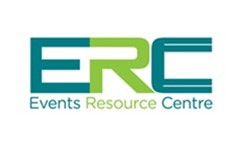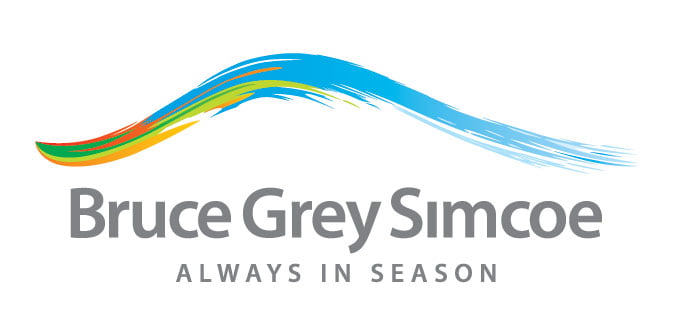
Event creators typically create multiple event sponsorship levels to fit various sponsor needs. Some sponsors may be able to participate at the highest level, while others may want to contribute in different ways like food, tech, or furnishings. By giving potential sponsors choices, you increase your chances of securing their support.
What are sponsorship levels?
Event sponsorship levels give your potential donors options to choose from. The benefits coincide with the particular sponsorship level. For example, one bracket of sponsorship might involve the use of branded cups or hanging banners. Virtual events can also display the sponsors’ logos at specific points.
Virtual and hybrid events expand how event creators can add value to sponsorships. Along with displaying brand logos, adding push notifications and video rooms for demos and networking are a few ways you can communicate the package’s value to the sponsor.
Pros & cons of offering different event sponsorship tiers
Potential sponsors are familiar with tiered sponsorship. The different options and price points help them decide whether or not it’s something their corporation is interested in. It’s also a simple concept to understand: at a gold tier level the sponsor would expect certain benefits, but they know they’ll get fewer benefits at the silver level, and so on.
Pros
Some of the benefits that event planners receive by offering different sponsorship tiers include:
- A clear path to RO: Offering a specific number of sponsorship packages at set prices lets you know the amount of revenue coming in to support the event. You aren’t reliant on ticket sales for funding, which can leave you guessing until the day of the event.
- A feeling of exclusivity: Limiting the number of available sponsorship packages gives donors a sense of exclusivity. They’ll feel like they are ahead of their competition. It also makes your sponsorship packages more attractive.
- Event sponsorship inclusivity: Including tiers at different price points allows both large and small businesses to participate. It creates a feeling of community while offering large and small brands exposure.
- Simple to set up: Designing the tiers in advance is easy based on the benefits you wish to offer.
Cons
The cons of offering different sponsorship tiers can include:
- Mismatch of sponsor needs: Some sponsors may only want part of one package and a couple of benefits from another tier. Sometimes, it’s impossible to make all of your potential sponsors happy.
- Vanity sponsor benefits: Vanity benefits like the placement of a company name or profile may seem like standard features in all types of sponsorship packages. Instead of stuffing your sponsorship packages with features, could you keep it simple for lower-tier sponsors? Save the prime logo placement feature for a top-tier package. This keeps your packages attractive to a variety of potential sponsors while ensuring they hold their value.
- Guessing at features: It’s challenging to anticipate what potential sponsors want in a tier program. They may only be interested in the benefits of a package that is more than what they’d like to spend, or they may not see the value of certain levels.
Virtual events are also popular, creating the need for new and creative benefits, but only some organizations see the value in sponsoring a virtual event. Virtual events can be difficult to create tiers for since there is typically limited signage and swag.
How to create attractive sponsorship levels
Sponsorship levels can have downsides, but the advantages typically outweigh any potential negatives. The key is to create attractive sponsorship levels that appeal to everyone.
Setting separate sponsorship levels
Setting different sponsorship levels helps your sponsors get more visibility and makes it easier for everyone involved in the event to track their ROI.
An excellent tip to follow is to look at your overall fund-raising goal and set the sponsorship levels to meet at least half. For example, if you’re raising $100,000 for the event, your sponsorship goal should be in the $50,000 or higher range. Your top sponsorship tier can be around $15,000 to $20,000, so you can meet your financial goal.
Naming them appropriately
While there’s nothing wrong with sticking to tried-and-true tier names like platinum, gold, silver, and bronze, event planners may want to get creative.
You often have more success attracting sponsors when the tier names reflect the event’s theme. Events centered on raising money for schools can create tiers with words like scholar, author, essayist, and contributor. An event focused on gardening could name its tiers after different flowers.
Getting creative with the tier names is an effective way to generate interest in your event.
Picking sponsors wisely
It’s tempting to accept any sponsor interested in supporting your event. However, being a little picky with your sponsors is a good idea. You want every aspect of the event to work seamlessly, and this includes the types of sponsors. For example, you probably don’t want to display advertising from a meat-packing plant if your event focuses on animal rights. It can send the wrong message to attendees and result in potential conflict.
As you’re planning the event, create a list of sponsors that could be a great fit. Sending out custom emails with sponsorship information is an effective way to generate the correct type of support.
Addressing your sponsors’ needs with sponsorship levels
Creating sponsorship tiers makes it easier to address individual donor needs. One sponsor may want to give away free products, while another would prefer to include a CTA on your marketing materials.
Discussing your donors’ needs helps ensure they receive value from supporting your event. It also takes out a lot of the guesswork when creating the various sponsorship tiers.
Providing additional benefits to sponsors
Your sponsorship levels should include distinct benefits for the donor, whether an organization, individual, or family. Some ideas include:
Marketing opportunities
- Naming opportunities for the event and pre-event activities
- Including the donor’s brand in event programs and press releases
- Displaying signage at the event
- Given recognition for the sponsorship by event speakers
- Displaying the sponsor’s logo on the event website
Event benefits
- Providing sponsors with tickets to the event and any VIP receptions
- Reserving tables for the sponsors
- Inviting the sponsor to become an event chair or co-chairperson
Don’t be afraid to get creative with your benefits. It’s also a good idea to arrange the gifts according to tier level. For example, you likely won’t offer a bottom-tier donor the opportunity to become a co-chair. This premium benefit is best reserved for top-tier donors.
Customization
Customizing your sponsorship packages will take some extra work. It would help if you determined which benefits interest your potential sponsors, and this often requires research. Prepare your sponsorship proposals several months before the event. Both you and your sponsors need time to prepare.
How to improve upon your sponsorship levels
For event creators, figuring out your sponsorship strategy can be a crucial milestone, as it determines your event’s budget and marketing strategy. Here are some ideas on how to improve your sponsorship levels.
Tiered pricing could limit sponsorship interest
As Larry Weil — better known as the Sponsorship Guy — puts it, “In some industries, packages work. For some events, it’s what people have grown to expect. But if you’re in a new, innovative space with many variables, don’t do it.”
That’s because most successful companies — and potential sponsors — value innovation and adaptability, making tiered sponsorships too limiting. Chris Baylis, President and CEO of The Sponsorship Collective, worries that sometimes “sponsors don’t want to buy benefits they don’t need, so forcing them to choose between arbitrary levels may mean you’re leaving money on the table.”
One way of integrating some variation into the tiered concept is by offering a little customization. Former vice president of Goodwin Group PR JoJo Gutfarb agrees, “Let sponsors know you can create something exclusively for them. If you don’t, you’re throwing money away.”
Offer options
If you’re considering ideas for alternatives to tiered sponsorships, try giving potential sponsors a menu of benefits to choose from. List your sponsorship assets by activation type — branding, on-site, samples, experiential — to help sponsors quickly understand your event’s potential.
By providing more options, you let your sponsors choose what works for them and leave out what doesn’t. This may result in smaller deals at first, but it can ultimately build bigger sponsorship deals as well as longer-lasting partnerships with more valuable sponsors.
Some experts still suggest providing a baseline value to help the sponsor determine if the opportunity is feasible for their budget. But Baylis thinks it’s better to avoid this: “When you truly understand your attendees and have created sponsorship opportunities that perfectly align with your prospect’s objectives, a menu will open the door to sponsors. Leaving the price off forces them to contact you,” he advises.
Examples of event sponsorship levels
Whether you are creating custom sponsorship invitations or fliers (you can include the event invitation in the flier), be sure to outline the sponsorship tiers and included benefits.
Here’s an example of a sponsor flyer that you can easily update to fit your event:
Event title: 30th Annual Houston Family Shelter Black Tie Gala
Title Sponsor: $20,000
- Logo is included on all event materials, and the sponsor’s name is part of the event title.
- Large banner displayed in a prominent location at the event
- Opportunity for the sponsor to speak or chair the event
- A specific number of tickets to the event and VIP events. For example, if your event includes an auction, the sponsor can preview the items before bidding begins.
VIP Sponsor: $10,000
- Naming rights for VIP auction preview reception
- Inside back cover ad in the program and an display advertising at the event
- Featured in newspaper and billboard advertising for the event
- Logo featured on the website for one year on event invitations and materials
- Tickets to the event and VIP auction preview. The number of tickets should be fewer than the top tier.
Presenting Sponsor: $5,000
- A full-page ad in the event program and an advertising display at the event
- Newspaper and billboard advertising for the event and sponsor
- Logo featured on the event website, invitations, and event materials
- Tickets to the event and other VIP events. You can offer third-tier sponsors the same number of event tickets as the second-tier.
Excellence Award Sponsor: $2,500
- Naming rights for one of the awards presented at the black-tie gala.
- A half-page ad in the event program and an advertising display at the event
- Inclusion in newspaper and event billboard advertising
- Brand name or logo on event invitations and website
- Tickets to the event and VIP events. You can drop the number of tickets down at this tier level.
Silver Sponsor: $1,000
- A half-page ad in the event program and display advertising at the event
- Featured in newspaper advertising for the event
- Name listed on event invitations and logo featured on the website
- A few tickets to the event and VIP activities
Bronze sponsor: $500
- A quarter-page ad in the event program and the sponsor’s logo featured on the event’s website
- Tickets to the event and VIP activities
Partner Sponsor: $300
- A listing in the event program and website
- Tickets to the event
These are just examples of the various sponsorship levels. Remember, with the tier names and included benefits, you can be as creative as you’d like.
Scale for success
Creating sponsorship levels takes time and effort. Do the research to determine benefits that are attractive to potential donors. And don’t be afraid to get creative with the benefits and tier names.
When you are ready to start planning your event, Eventbrite has the tools you need to simplify the process. Check out our sponsorship resources to learn more about attracting donors to your next event.


